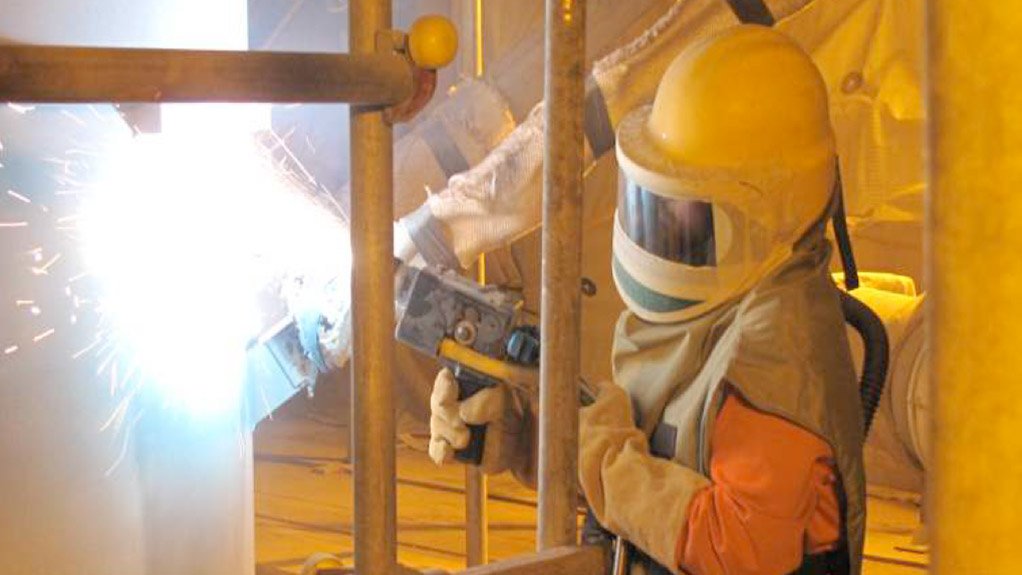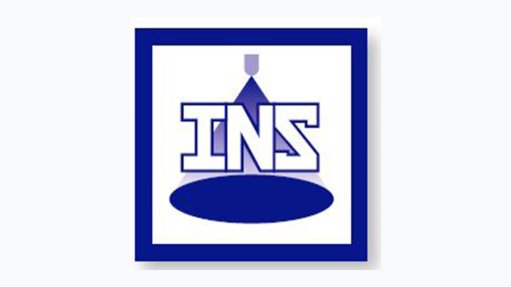Thermal spray coatings to protect refineries


PREVENTING CORROSION Corrosion under insulation accounts for as much as 40% to 60% of a company’s piping maintenance costs
The problem of corrosion under insulation (CUI), which is common in the oil refineries industry, can be controlled by applying a thermal spray that is available from wear, corrosion and hardfacing company Weartech.
Thermal spraying techniques involve a coating process, whereby a melted material is sprayed onto a surface to coat it.
Other industries that can also benefit from using the thermal spray include the refining, petrochemicals, power, industrial, onshore and offshore industries.
CUI is difficult to locate owing to the insulation cover that masks the corrosion problem, often to a point where it would be costly to fix.
The problem occurs on carbon steels and 300-series stainless steels. On carbon steels, CUI manifests as generalised or localised wall loss; with stainless pipes it is often pitting and corrosion-induced stress cracking.
Though failure can occur in a broad band of temperatures, corrosion becomes a significant concern in steel at temperatures between 0 ºC and 149 ºC, but is most severe at about 93 ºC. Corrosion and corrosion-induced stress cracking rarely occur when operating temperatures are constantly greater than 149 ºC.
The cause of CUI is water ingress into the insulation, which traps the water – like a sponge – in contact with the metal surface. The water can originate from rainfall, leakages, deluge system water, wash water or sweating from temperature cycles or low temperature operation, as in refrigeration units.
It is also widely known that the results of CUI are costly, with the problem accounting for as much as 40% to 60% of a company’s piping maintenance costs. CUI can result in repairs running into millions of rands and leading to significant plant downtime.
The bulk of studies conducted on CUI involves all forms of corrosion and their associated costs, without providing the individual cost of corrosion related to insulation.
A study completed in 2001 by a US research team of corrosion specialists reported the direct cost of CUI to be $276-billion a year, with that number potentially doubling when indirect costs are also considered.
Solutions
In recent years, the CUI prevention philosophy of many large petrochemicals companies has been based on the inspection-free, maintenance-free concept.
Insulated systems – particularly piping systems – are expected to have a service life of 25 to 30 years. Evaluation of life-cycle savings has led to consideration of new, simple approaches to preventing CUI.
All thermal spraying processes rely on the same principle of heating a feedstock: accelerating it to a high velocity, and then allowing the particles to strike the substrate. The particles will deform and freeze onto the substrate. The coating is formed when millions of particles are deposited on top of one another. With thermal spray aluminium (TSA), the particles are bonded to the substrate mechanically.
The first step of any coating process is surface preparation, whereby surfaces are cleaned with a process that involves white-metal-grit-blasting the surface to be coated.
Masking techniques may be adopted for components that only need specific areas to be coated.
The second step is to atomise the aluminium, which is done by introducing the feedstock material into the heat source. The heat source may be produced by either chemical reaction (combustion) or electrical power (twin-wire arc spray). Next, the particles are accelerated to the substrate by the gas stream and deform on impact to make a coating.
Finally, the coatings are inspected and assessed for quality by mechanical or microstructural evaluation.
The two common thermal spray techniques used to apply TSA to components are wire flame spray and twin-wire electric arc spray.
Adhesion to the substrate is considered largely mechanical and is dependent on the work piece being clean and suitably rough. Roughening is carried out by grit blasting to a white metal condition with a sharp, angular profile in the 50 μm to 100 μm range.
Flame and arc spraying require relatively low capital investment and are portable; they are often applied in open workshops and on site.
Consumables used for TSA with these processes are more than 99%-purity aluminium wires.
Article Enquiry
Email Article
Save Article
Feedback
To advertise email advertising@creamermedia.co.za or click here
Comments
Press Office
Announcements
What's On
Subscribe to improve your user experience...
Option 1 (equivalent of R125 a month):
Receive a weekly copy of Creamer Media's Engineering News & Mining Weekly magazine
(print copy for those in South Africa and e-magazine for those outside of South Africa)
Receive daily email newsletters
Access to full search results
Access archive of magazine back copies
Access to Projects in Progress
Access to ONE Research Report of your choice in PDF format
Option 2 (equivalent of R375 a month):
All benefits from Option 1
PLUS
Access to Creamer Media's Research Channel Africa for ALL Research Reports, in PDF format, on various industrial and mining sectors
including Electricity; Water; Energy Transition; Hydrogen; Roads, Rail and Ports; Coal; Gold; Platinum; Battery Metals; etc.
Already a subscriber?
Forgotten your password?
Receive weekly copy of Creamer Media's Engineering News & Mining Weekly magazine (print copy for those in South Africa and e-magazine for those outside of South Africa)
➕
Recieve daily email newsletters
➕
Access to full search results
➕
Access archive of magazine back copies
➕
Access to Projects in Progress
➕
Access to ONE Research Report of your choice in PDF format
RESEARCH CHANNEL AFRICA
R4500 (equivalent of R375 a month)
SUBSCRIBEAll benefits from Option 1
➕
Access to Creamer Media's Research Channel Africa for ALL Research Reports on various industrial and mining sectors, in PDF format, including on:
Electricity
➕
Water
➕
Energy Transition
➕
Hydrogen
➕
Roads, Rail and Ports
➕
Coal
➕
Gold
➕
Platinum
➕
Battery Metals
➕
etc.
Receive all benefits from Option 1 or Option 2 delivered to numerous people at your company
➕
Multiple User names and Passwords for simultaneous log-ins
➕
Intranet integration access to all in your organisation

















